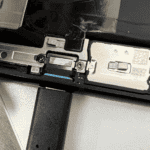Shipping a CPU safely requires careful preparation to protect this delicate computer component. Wrap the CPU in anti-static foam and place it in a sturdy box with padding to prevent damage during transit. This method shields the central processor from static electricity and physical shocks.
You’ll need to choose the right packaging materials. Anti-static bags or foam protect against electrical damage. Bubble wrap or foam peanuts cushion the CPU. A strong box keeps everything secure.
Proper labeling is key. Mark the package as “Fragile” and “Handle with Care.” Include clear shipping and return addresses. Consider insurance for valuable CPUs. These steps help ensure your processor arrives safely at its destination.
| Packaging Item | Purpose |
|---|---|
| Anti-static foam | Protects from static |
| Bubble wrap | Cushions impacts |
| Sturdy box | Outer protection |
| Fragile labels | Alerts handlers |
Preparing the CPU for Shipping
Proper packaging is crucial to ensure your CPU arrives safely. This involves selecting the right materials, securing the processor, and taking anti-static precautions.
Selecting Appropriate Packaging Materials
Choose materials that will protect your CPU during transit. The original box is ideal if you have it. If not, use a sturdy cardboard box slightly larger than the CPU.
Fill empty spaces with:
- Bubble wrap
- Foam inserts
- Air pillows
- Packing peanuts
Avoid newspaper or plain paper as they don’t offer enough protection. Use packaging tape to seal the box securely.
Securing the CPU within the Enclosure
Place the CPU in an anti-static bag first. This protects against electrical damage. Wrap the bagged CPU in a layer of bubble wrap.
Secure it inside the box:
- Use foam inserts to create a snug fit
- Fill any gaps with packing materials
- Ensure the CPU can’t move around
For extra protection, consider double-boxing. Place the wrapped CPU in a smaller box before putting it in the larger shipping box.
Anti-Static Measures
Static electricity can damage sensitive CPU components. Take these precautions:
- Use an anti-static bag to enclose the CPU
- Handle the CPU by its edges, avoiding contact with pins
- Work on an anti-static mat if possible
- Ground yourself by touching a metal object before handling the CPU
Don’t use regular plastic bags or aluminum foil. They can generate static. If you don’t have an anti-static bag, wrap the CPU in anti-static bubble wrap.
| Material | Static Protection | Cushioning |
|---|---|---|
| Anti-static bag | Excellent | Poor |
| Bubble wrap | Poor | Excellent |
| Foam | Moderate | Good |
| Packing peanuts | Poor | Good |
Choosing a Shipping Carrier
Selecting the right carrier is crucial for safely shipping your CPU. Your choice impacts cost, delivery speed, and protection during transit.
Analyzing Carrier Options
Major carriers like FedEx, UPS, and USPS offer various shipping options for CPUs. Compare their services based on:
- Delivery speed
- Cost
- Package handling practices
- Coverage area
FedEx and UPS often provide more robust packaging guidelines for electronics. USPS can be cost-effective for smaller CPUs. Consider regional carriers for potentially lower rates on short-distance shipments.
| Carrier | Pros | Cons |
|---|---|---|
| FedEx | Extensive network, specialized electronics packaging | Higher costs |
| UPS | Reliable tracking, good insurance options | Can be expensive for international shipping |
| USPS | Often cheaper for small packages | Less specialized handling for electronics |
Insurance and Tracking Services
Protect your CPU shipment with adequate insurance coverage. Most carriers offer basic coverage, but you may need additional protection for high-value processors.
Key points to consider:
- Declare the full value of your CPU
- Understand coverage limits and exclusions
- Keep proof of value (receipt or appraisal)
Tracking services are essential for monitoring your CPU’s journey. Opt for carriers with real-time tracking and delivery notifications. This allows you to:
- Monitor package location
- Anticipate delivery times
- Quickly address any shipping issues
Choose a service level that matches your needs for speed, security, and budget.
Labeling and Documenting The Shipment
Proper labeling and documentation are crucial for safe CPU shipping. These steps ensure your package reaches its destination and protect you in case of loss or damage.
Creating the Shipping Label
Creating a clear shipping label is essential for your CPU’s journey. Use a sturdy label that won’t tear or smudge. Print or write the recipient’s address in large, legible letters. Include their full name, street address, city, state, and zip code. Add your return address in the top left corner.
For international shipments, include the country name. Add any special handling instructions like “Fragile” or “Handle with Care” in bold letters. Stick the label securely to the shipping box with clear packing tape, covering its entire surface to protect it from moisture.
Including Essential Documents
Proper documentation safeguards your shipment. Include a packing list detailing the contents inside the box. List the CPU model, serial number, and any accessories. This helps with customs clearance for international shipments.
Add an invoice if required, especially for business transactions. For high-value CPUs, consider including insurance documentation. Place all papers in a waterproof sleeve and attach it to the outside of the box in a clear plastic pouch labeled “Documents Enclosed.”
Keep copies of all documents for your records. Take photos of the packed CPU and shipping label as extra proof of condition and addressing.
| Document Type | Purpose | Location |
|---|---|---|
| Packing List | Itemize contents | Inside box |
| Invoice | Prove value | Document pouch |
| Insurance | Protect shipment | Document pouch |
| Customs Forms | Clear international borders | Document pouch |
After Shipment Care
Once your CPU arrives, proper handling and support are crucial. Careful inspection and timely communication with the shipper can ensure your processor arrives safely and functions as expected.
Confirmation and Customer Support
Upon receiving your CPU package, inspect it carefully for any visible damage. Check the box for dents, tears, or signs of mishandling. Open it gently and examine the CPU and its protective packaging.
If you notice any issues, document them with photos before handling the CPU further. This evidence may be needed for insurance claims or returns.
Contact the shipper or seller immediately if there are problems. Most carriers offer tracking and insurance for valuable items like CPUs. Have your tracking number ready when you call.
Keep all packaging materials until you’ve confirmed the CPU works properly. If you need to return it, original packaging is often required.
Test your CPU as soon as possible after receipt. If it doesn’t function correctly, reach out to customer support quickly. Many sellers have limited windows for returns or replacements.
| Action | Timeframe |
|---|---|
| Inspect package | Immediately upon receipt |
| Test CPU | Within 24-48 hours |
| Report issues | Within 3-5 business days |
Remember, prompt communication is key to resolving any shipping-related problems with your new CPU.
Frequently Asked Questions
Shipping a CPU requires careful preparation and proper materials. Let’s address some common concerns about packaging, protection, and safe transit for CPUs.
What type of packaging is recommended for shipping a CPU?
The best packaging for shipping a CPU includes an anti-static bag and bubble wrap. Place the CPU in the anti-static bag first. Then wrap it with 3-4 inches of bubble wrap on all sides.
Use a sturdy box filled with packing peanuts or more bubble wrap. This protects the CPU from shocks during transit.
Are anti-static bags necessary for CPU shipping, and if so, where can they be obtained?
Anti-static bags are essential for shipping CPUs. They protect the sensitive components from static electricity damage.
You can buy anti-static bags at electronics stores, office supply shops, or online retailers. Computer repair shops may also have them available.
What precautions should be taken when shipping a CPU without the original packaging?
Without original packaging, take extra care. Wrap the CPU in an anti-static bag. Then use plenty of bubble wrap or foam padding.
Choose a box at least 2 inches larger than the wrapped CPU on all sides. Fill empty spaces with packing peanuts or crumpled paper to prevent movement.
How can a CPU be safely stored prior to shipping?
Store the CPU in an anti-static bag in a cool, dry place. Keep it away from magnets and electronic devices.
If possible, use the original plastic clamshell case. This offers the best protection during storage.
What is the best method for securing a CPU during transit?
The best method involves double-boxing. Place the wrapped CPU in a smaller box with padding. Then put this box inside a larger one with more cushioning.
Use strong packing tape to seal both boxes. Mark the package as “Fragile” and “Handle with Care” on all sides.
Where can one find CPU-specific shipping materials like clamshells or shipping boxes?
CPU-specific materials are available from computer parts retailers and online marketplaces. Some electronics stores may stock these items.
For custom options, packaging supply companies offer various sizes of anti-static materials and foam inserts designed for electronics.
| Packaging Material | Purpose | Where to Find |
|---|---|---|
| Anti-static bags | Protect from static | Electronics stores, online |
| Bubble wrap | Cushioning | Office supply stores, shipping centers |
| Packing peanuts | Fill empty space | Shipping centers, packaging stores |
| Double-wall boxes | Outer protection | Moving supply stores, shipping centers |
| Foam inserts | Custom fit protection | Packaging supply companies |






